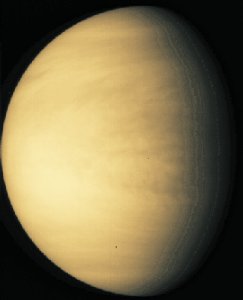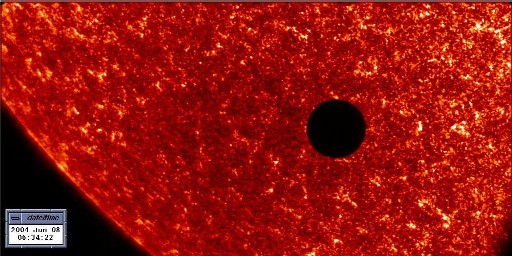The Planets - Venus
Updated May 8, 2019 |
Infoplease Staff



Venus is often called Earth's twin because the two planets are close in size, but that's the only similarity. The thick clouds that cover Venus create a greenhouse effect that keeps it sizzling at 864°F. Venus, named after the Roman goddess of love and beauty, is also known as the “morning star” and “evening star” since it is visible at these times to the unaided eye. Venus appears as a bright, white disk from Earth.
- Size: About 650 miles smaller in diameter than Earth
- Diameter: 7,519 miles (12,100 km)
- Surface: A rocky, dusty, waterless expanse of mountains, canyons, and plains, with a 200-mile river of hardened lava
- Atmosphere: Carbon dioxide (95%), nitrogen, sulfuric acid, and traces of other elements
- Temperature: Ranges from 55°F (13°C) to 396°F (202°C) at the surface
- Rotation of its axis: 243 Earth days
- Rotation around the Sun: 225 Earth days
- Your weight: If you weigh 100 pounds on Earth, you would weigh 88 pounds on Venus.
- Distance from Earth: At its closest, Venus is 26 million miles (41,840,000 km) away
- Mean Distance from Sun: 67.24 million miles (108.2 million km)
- Satellites: 0
- Rings: 0

This is an image of Venus passing in front of the Sun. Photo courtesy of NASA
Fact Monster/Information Please® Database, © 2007 Pearson Education, Inc. All rights reserved.
.com/science/astronomy/planet-venus.html







